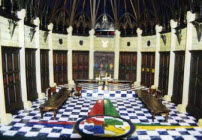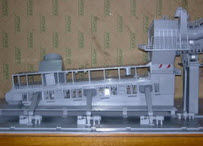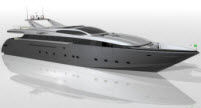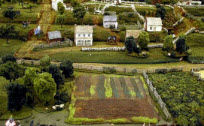
October 16, 2009
 |
 |
| Director Model Hogwart's Main Hall | Precision Engineered model for promotion |
 |
 |
| Designer's model of a Yacht concept | Wargamer's Civil War battlefield Dioramma |
There are different forms of modeling (planes, cars, trains, buildings, ships and dioramas and there are also assorted scales (sets of proportions) usually depicted as letters or letter pairs—G, O, S, HO, N and Z scales. These determine many things like the size of your finished object, the work area needed to complete it and the space required for display. You will find a good conversion table an indispensible tool.
Ostensible, man in an inch-based system averages about six feet in height. For many modelers imagining this height against an object being modeled is all that is needed to scale the life-sized into the scale being modeled.
Scale modeling is by no means drawing participation from everyone, but surprisingly many besides hobbyists are drawn into the action.
Commercial interests are represented by craft stores, hobby shops, manufacturers (big corporations to one-man shops) and a vast number of Internet web sites like www.scale-modelers-handbook.com.
![]()
Give Your Modeling A Kick Start
I often find, specially now that I am beyond 70, my motivation to get going needs a good kick start to turn on the flow of my modeling juices.Here are seven steps I turn to:
1. Develop your own plan in outline form so you go through the same steps with each model you begin. Do it on your computer or PDA so changes and updates are easily executed.2. Don’t model in silence. Provide your modeling area with music, a good source is the Cable TV music channel.
3. Movies, Photographs, Drawings -- What the eye takes in can be a stimulus to your motivation to pick up the knife, the brush or the tweezers. In addition they bring to life the detail you are trying to emulate. Do not get bogged down in research but knowing the history of your subject helps in its recreation. Google Images and model railroading forums are valuable resources I couldn’t be without.
4. Talk to get motivated. I know once I tell my wife about a phase of the layout I am going to build, I feel a sense of commitment to carry it out.
5. Seeing the finished project stimulates my desire. I imagine it finished. Here again, pictures of layouts I am emulating provide an inducement to get to work. Also, of the project will bring in money, it will take precedence.
6. How do you eat an elephant—One bite at a time. You will get more done more quickly by breaking your modeling project into modules. Then take any small step; you’ll want another.
7. Find your niche. You will be much more motivated if what you are modeling is something in which you have a sincere interest.
If you really get bogged down and it has happened to me more than once, take it to God. There is no depression, no "blue funk" or no dreariness or no feeling of melancholy that prayer and reading the Bible can't cure.
God can get you charged up about your next model build. He can show you how to use it to meet new friends and get back in touch with old ones.
Take your Blue Funk and make pink lemonade.
![]()
Pick Your Era or...
Let Your Era Pick You
I just got done reading Joe Fugate’s editorial ”We don’t need no stinkin’ roofwalks!” in the October issue of “Model Railroad Hobbiest Magazine” and I agree with a lot of it except for the basic premise, I guess I don’t like the idea of reliving today all that much. Of course having lived in the era of steam may have had something to do with it.There is a lot to be said for going back to childhood memories from a scenic standpoint.
I have an N-Scale layout which features many of these flashbacks like a town main street that includes my long gone teenage hangout, a river scene with my favorite swimming hole and a granite quarry modeled after an old abandoned quarry up behind my home; the scene of many mountaineering adventures.
Yes, my modeling includes a heavy dose of nostalgia and I have done it on purpose. Of course it has meant more difficult research (none of those places exist today the way they did when I was 60 years younger, but this has been half the fun for me.
The subject I am modeling, the St. J. & L.C. never did turn a profit on it’s 90-mile route. As a kid I’d have never believed that, how could someone who could afford to put those massive steam engines and the diesels onto those rails not be making money doing it.
Memories are something you can’t put a value on, but life, it seems to me, would be a lot meaner without them. I have been chomping at the bit to head back to the “ole stompin’ grounds around St. Johnsbury, VT, but keep putting it off as I can’t justify the gas investment.
Yet I burn up the same amount of gas weekly in the pursuit of a paycheck.
They say You Can’t Go Home because what you remember is long gone. But there are things I’d like to really know. The dimensions of the ET &HK Ide plant, the exact path I used to use to scale the quarry and the height of the waterfalls at my ole swimmin’ hole.
It is the little things that count.
![]()
Prime leg space for Paper
I can't tell you how many times I have used that roll of paper towels I put into that plastic paper roll holder under my workbench. It's the best Dollar Store investment I have made.Now a paper towel is there when I spill liquids like glue or paint. Some have been even worse but there was a towel for a quick pick-up.
They make a quick paint pallet and alternate as a brush cleaner.
If I am working with super glue that I don't really want to touch and accidently apply too much, a piece of paper towel (fiber edge) will wick the excess away from the joint.
Wet or dry, towel sheets can be skrunched into piles that serve as a mountain or hill base.